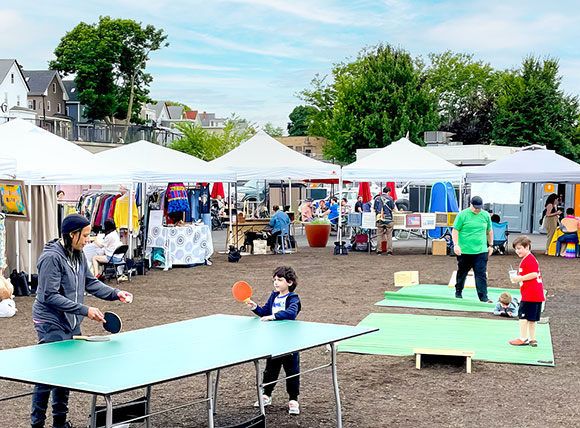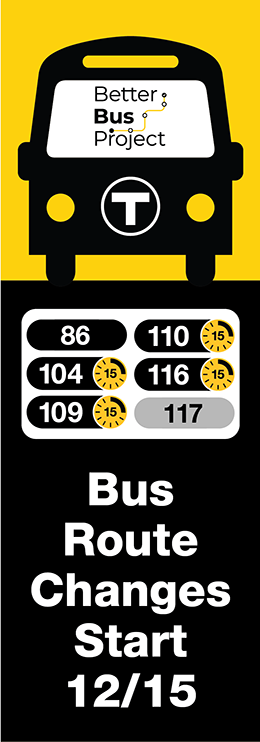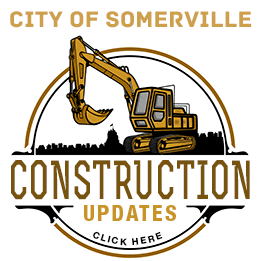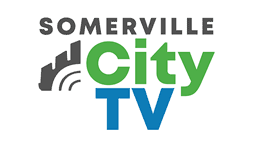
More than 70 community events have taken place in the as-of-yet developed Gilman Station space while details of the plan are being ironed out.
By Jeffrey Shwom
As we approach the two-year anniversary of the opening of the Green Line Extension’s Medford/Tufts line on December 12, the status of transit-oriented and civic space development next to train stations, especially the Gilman Square station, remains in process after years of planning. The Times caught up with the City of Somerville’s Economic Development department, which is touting forward progress in development around Gilman Square.
Per the MBTA, “Transit-oriented development (TOD) is compact, walkable development at or near transit stations, generally including a mix of uses such as housing, shopping, employment, and recreational facilities.” The MBTA took temporary control of the Homans site (350 Medford Street) during the Gilman Square Green Line Station construction and returned it to the City of Somerville in May 2023.
The Gilman Square Station Area Plan, with nine major goals, was adopted in 2014 and has shaped modernization of zoning there to include more density, as well as recommending upgrades to civic spaces like the Marshall Street Playground and the Winter Hill Schoolyard (completed 2018), the city tells The Times. Fast forward to November 2023’s Housing and Community Development Committee meeting where the Department laid out a three-fold focus through 2024:
- Working on a study of all city-owned land and disposition strategy
- Research into grant funding for infrastructure up to the Green Line station, and;
- Temporary placemaking to bring activity to the Homans site in the short term.
Complications arose this past year, including continued staffing challenges and “a pause in long-term redevelopment planning to determine if the site was needed for the Winter Hill School response.” As reported in Cambridge Day in November 2023, The City of Somerville’s Economic Development department indicated that disposition study (a study of city properties to sell, sublease, or negotiate a lease buyout of a property, for example) would take the better part of a year.
“The analogy that I’m finding best describes this (as) trying to untangle a knotted necklace,” says Rachel Nadkarni, Director of Economic Development. “The future of the Homans site is several knots back from the end, behind the city’s Capital Investment Plan, the Disposition Strategy, and partnering with the MBTA on the accessible route to the station, which has long been identified as the top priority discussed in the neighborhood. Making decisions about redeveloping the Homans site requires first untangling key issues in those other efforts.” The city’s Capital Investments Plan (CIP) sets forth the capital projects the City will fund over future years.
While long term planning continues, the lights have turned on at the fields below the high school. The city created a temporary pop-up park and worked through grants for improving accessibility to the Green Line, as a primer for the future. “CultureHouse worked with numerous event organizers to bring over 70 events to the space between June and September 2024, including art, music, fitness, markets, political office hours, and community gatherings. The temporary pop-up park remains open and available for community events and everyday use.”
Furthermore, Planning staff applied for grants for a bridge at the East Somerville Green Line Station, in partnership with the MBTA and private developers. That partnership is yielding “important learnings that will inform future grant requests for the Gilman Square work, including general construction costs and how high over the catenary lines a pedestrian bridge needs to be.” Other development activity in the Gilman Square area has occurred. 228-236 Pearl Street was up zoned for private development and the city has received an application to renovate the ground floor of the Piano Building (343 Medford Street).
Elsewhere, the Ball Square Transit-Oriented Development site, which makes an L shape around the grey substation, is located physically in Medford. The status of MBTA control of the space is unknown after outreach to the MBTA. As recent as May 2024, the MBTA announced completion of five “Collaborative Agreements to Advance Housing Transit-Oriented Development Projects,” including Attleboro (600 units), Salem (120 mixed-income units), Winchester, Boston, and Swampscott (114 units, 76 as affordable). Tufts University and the MBTA have a long term “Maintenance and Security Agreement” in place, which may allow building of a 100,000-square-foot structure. That agreement was last updated publicly in 2015, however.
“The MBTA is considering all stakeholder interests with respect to the future use of the site.”















Make half of the property parking for the high school and the other half a park.
The high school needs more parking, especially if we want to attract good teachers from around the region.
The high school already has more than enough parking. Parking is an absolute waste of land immediately next to transit. There are other and better incentives to hire teachers, especially considering how transit accessible the school is. The best teachers live close to their students and don’t drive in from somewhere else too.